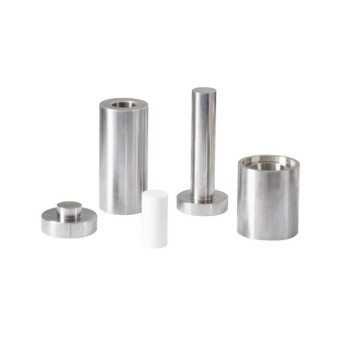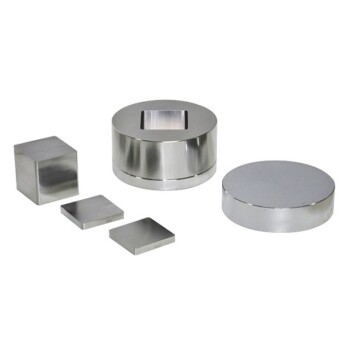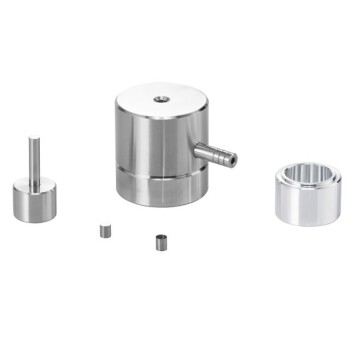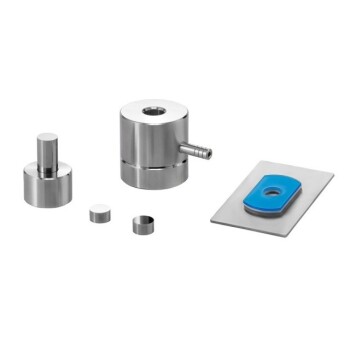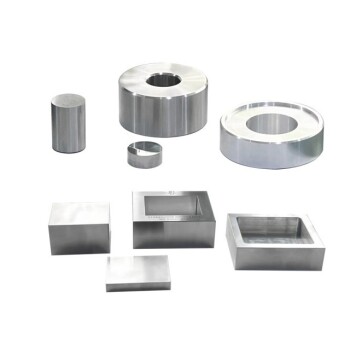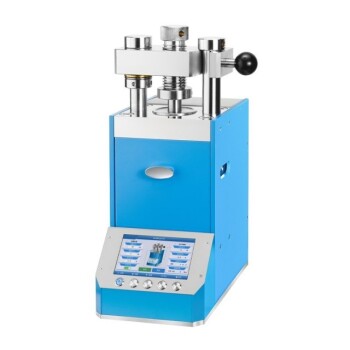Yes, absolutely. A laboratory press is not a one-size-fits-all instrument, and manufacturers can and do customize them to meet highly specific client requirements. These modifications can range from simple adjustments in size to the integration of complex control systems and ancillary equipment tailored for a unique process.
The ability to customize a laboratory press is not merely a feature—it is a strategic capability. It transforms a general-purpose tool into a precision instrument designed to solve a specific material science, research, or quality control challenge that standard equipment cannot address.
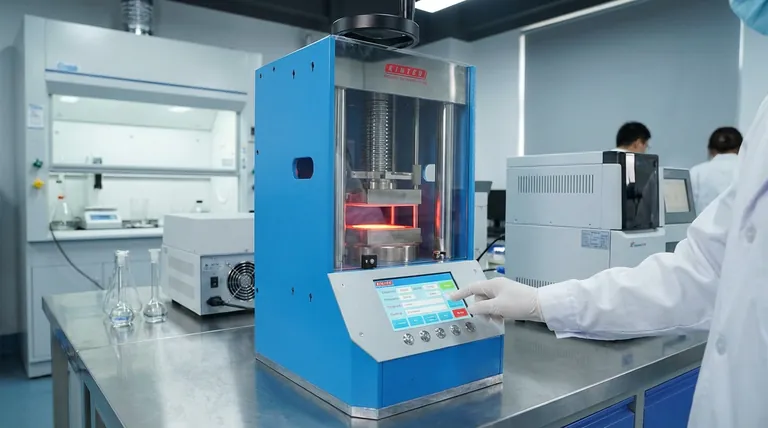
Why a Standard Press May Not Be Enough
Off-the-shelf laboratory presses are designed for a wide range of common applications, such as sample preparation for spectroscopy or basic materials testing. However, they often fall short when research or production goals become more demanding.
Your process may involve unique material properties, require exceptional precision, or operate under specific environmental constraints. In these cases, a standard press creates limitations, while a custom press creates possibilities.
Key Areas of Customization
When you engage with a manufacturer to build a custom press, the discussion will center on a few key subsystems. Understanding these will help you define your requirements clearly.
Platen Size and Temperature Control
The platens are the heart of the press. Customization here is common and includes adjusting the size and shape to accommodate non-standard sample molds or parts.
More importantly, temperature control is a critical variable. You can specify multi-zone heating for uniform temperature across a large surface, rapid heating and cooling cycles (thermal ramping), or the integration of channels for liquid cooling.
Clamping Force (Tonnage) and Control
While standard presses come in set tonnage ratings (e.g., 25, 50, 100 tons), your application might need a specific force that is either higher, lower, or more finely controlled.
Advanced customization involves the control system itself. You can request features like programmable force profiles, where pressure is automatically increased or decreased over a specific time period to achieve a desired material property.
Automation and Process Control
For repeatability and reduced operator error, especially in a quality control or pilot production setting, automation is key. This is a major area for customization.
This can range from a simple programmable logic controller (PLC) for recipe-based operation to a fully integrated system with PC-based software for data logging, process visualization, and remote monitoring.
Ancillary Equipment and Special Fixtures
A press often works as part of a larger process. Customization can involve integrating ancillary equipment directly into the press frame or controls.
Examples include built-in vacuum chambers for curing composites, specialized molds and tooling, or fixtures for testing the tensile or flexural strength of a sample immediately after it is formed.
Safety and Environmental Features
Your operating environment dictates specific safety needs. A press can be customized for use in a cleanroom with stainless steel surfaces and non-shedding components.
For applications involving volatile materials, you can request explosion-proof (ATEX or Class/Div rated) electronic and hydraulic components, as well as enhanced safety guarding and light curtains.
Understanding the Trade-offs
Customization provides a perfect-fit solution, but it is essential to approach it with a clear understanding of the trade-offs involved.
Cost Implications
A custom-engineered press will have a higher upfront cost than a standard model. The design, unique components, and specialized assembly labor all contribute to this increase.
Lead Time and Development
Standard presses are often in stock or have short lead times. A custom press requires a design and approval process, procurement of special parts, and dedicated assembly time, which can extend the delivery schedule by weeks or months.
Maintenance and Support
While manufacturers provide full support for their custom machines, maintenance can be more complex. A unique component may not be a standard, off-the-shelf replacement part, potentially leading to longer downtimes if a spare is not kept on hand.
Making the Right Choice for Your Goal
To determine the right path, analyze your core objective. Your specific goal will dictate which customization features offer the greatest return on investment.
- If your primary focus is advanced research and development: Prioritize flexibility with wide-ranging temperature controls, precise force profiling, and comprehensive data logging.
- If your primary focus is pilot production or quality control: Emphasize automation with PLC-based recipe management, process repeatability, and integrated safety features.
- If your primary focus is working with unique or sensitive materials: Concentrate on ancillary systems like vacuum chambers, specialized platen surfaces, and cleanroom compatibility.
Ultimately, investing in a customized press is about aligning your equipment's capabilities directly with your scientific or production goals.
Summary Table:
| Customization Area | Key Features |
|---|---|
| Platen Size & Temperature Control | Multi-zone heating, rapid thermal ramping, liquid cooling |
| Clamping Force & Control | Programmable force profiles, precise tonnage adjustments |
| Automation & Process Control | PLC-based recipes, data logging, remote monitoring |
| Ancillary Equipment | Vacuum chambers, specialized molds, testing fixtures |
| Safety & Environmental | Cleanroom compatibility, explosion-proof components, enhanced guarding |
Ready to elevate your laboratory's capabilities with a press tailored to your exact needs? KINTEK specializes in custom lab press machines, including automatic lab presses, isostatic presses, and heated lab presses, designed to meet the unique demands of research, quality control, and pilot production. Our solutions ensure superior precision, efficiency, and safety for your specific applications. Contact us today to discuss how we can help you achieve your goals!
Visual Guide
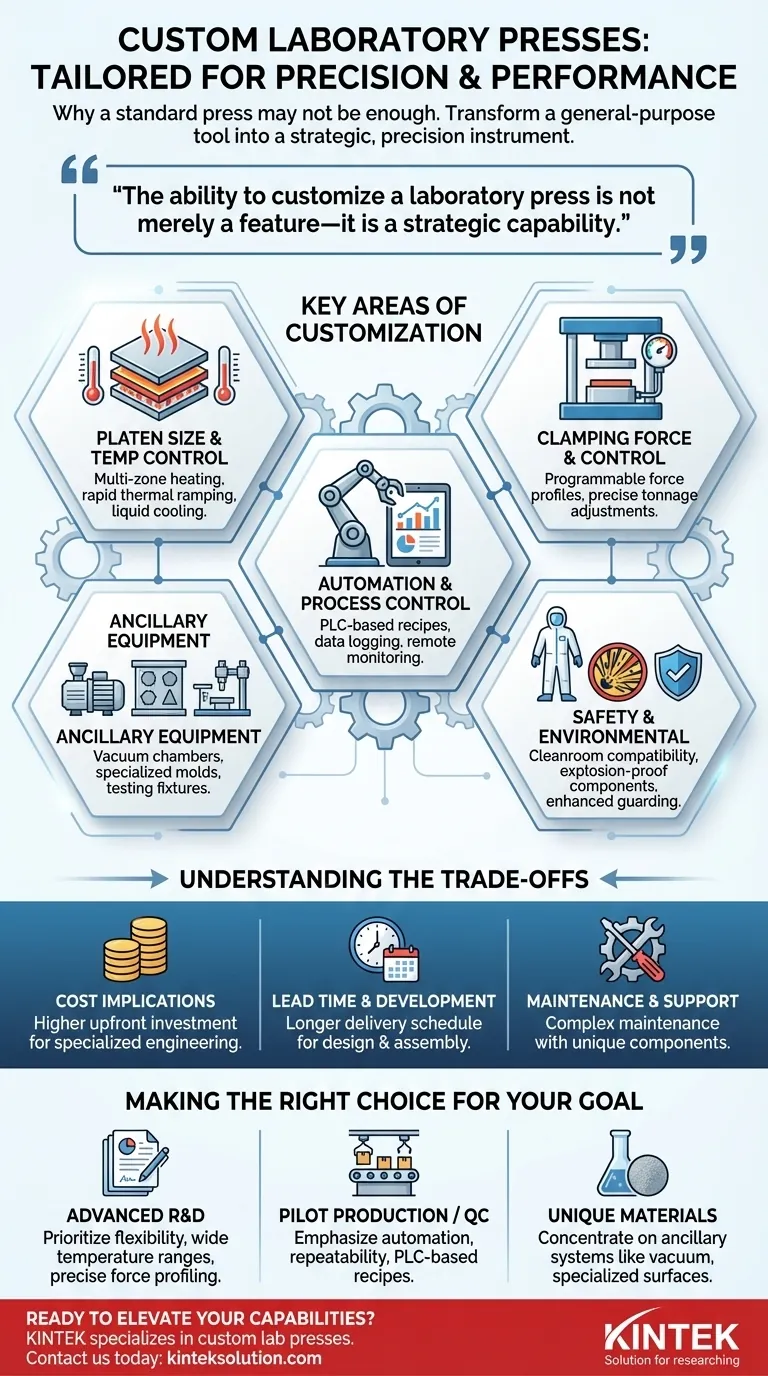
Related Products
- Automatic Laboratory Hydraulic Press Lab Pellet Press Machine
- Laboratory Hydraulic Press Lab Pellet Press Machine for Glove Box
- Automatic Laboratory Hydraulic Press for XRF and KBR Pellet Pressing
- Laboratory Hydraulic Press 2T Lab Pellet Press for KBR FTIR
- Laboratory Hydraulic Press Lab Pellet Press Button Battery Press
People Also Ask
- How are hydraulic pellet presses used in educational and industrial settings? Boost Efficiency in Labs and Workshops
- How do hydraulic pellet presses contribute to material testing and research? Unlock Precision in Sample Prep and Simulation
- What feature of the hydraulic portable press helps monitor the pellet-making process? Discover the Key to Precise Sample Preparation
- How are hydraulic presses used in the preparation of powder mixtures? Achieve Precise Compaction for Accurate Analysis
- What are the limitations of hand-operated presses? Avoid Sample Compromise in Your Lab









